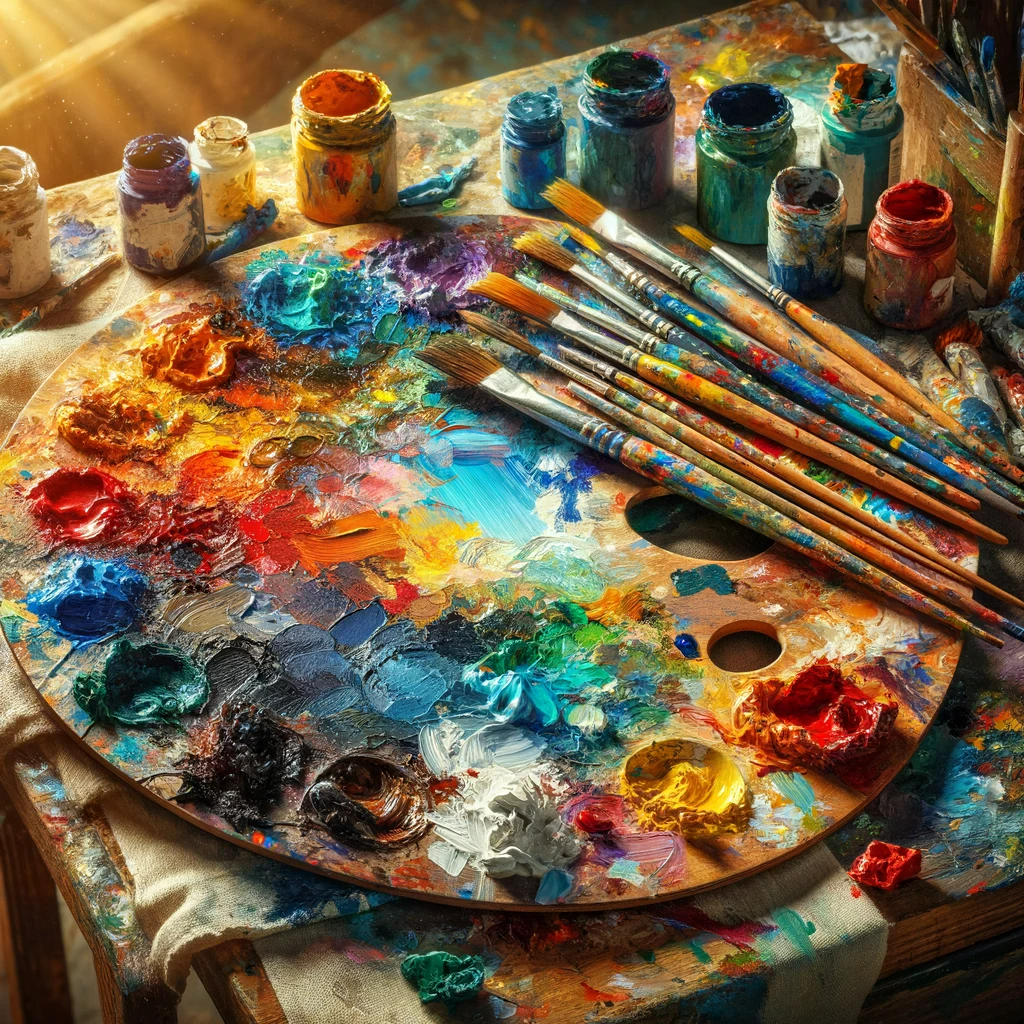
Did you know that only 8% of people actually achieve their New Year’s resolutions? When it comes to artistic goals, it’s important to set clear intentions and take proactive steps to ensure success.
In this discussion, we will explore some fresh and inspiring artistic goals for the new year that will not only challenge and motivate you but also help you grow as an artist.
From exploring new mediums and techniques to embracing creative collaboration, engaging in artistic self-reflection, and seeking inspiration from unconventional sources, there are endless possibilities to reignite your passion and take your art to new heights.
So, let’s dive in and discover the exciting artistic goals that lie ahead.
Setting Clear Artistic Intentions
To set clear artistic intentions, it’s important to establish specific goals and objectives for your creative endeavors. By defining your intentions, you create a roadmap that guides your artistic journey, ensuring that you stay focused and motivated.
Start by asking yourself what you hope to achieve with your art. Do you want to improve your skills, express a specific theme or message, or simply enjoy the process? Once you have a clear vision, break it down into smaller, actionable goals. These goals should be measurable, realistic, and time-bound, helping you stay accountable and track your progress.
Consider setting objectives that align with your artistic style and interests. For example, if you enjoy painting landscapes, you might set a goal to complete a series of landscape paintings within a certain timeframe. This specificity will help you stay motivated and engaged in your creative practice.
Remember to be flexible and open to change. As you progress, you may discover new passions and directions. Embrace these opportunities and adjust your intentions accordingly.
Exploring New Mediums and Techniques
Once you have established your clear artistic intentions, it’s important to expand your creative horizons by exploring new mediums and techniques.
By stepping out of your comfort zone and trying something new, you can invigorate your artistic practice and discover fresh ways to express yourself.
One way to explore new mediums is to experiment with different art supplies. For example, if you typically work with acrylic paints, you could try watercolors or pastels. Each medium has its own unique qualities and challenges, which can inspire you to approach your artwork in new and exciting ways.
Another way to expand your creative horizons is to learn new techniques. Attend workshops or classes where you can learn from experienced artists and gain insights into their methods. You can also find tutorials and instructional videos online to learn at your own pace.
Embracing Creative Collaboration
Embrace the power of creative collaboration to enhance your artistic practice and expand your creative horizons. Collaborating with other artists can provide you with fresh perspectives, new techniques, and opportunities for growth. By working together, you can combine your unique skills and talents to create something truly extraordinary.
Creative collaboration fosters a sense of belonging and community within the artistic world. It allows you to connect with like-minded individuals who share your passion for art. Through collaboration, you can learn from others, gain inspiration, and build strong relationships that can last a lifetime.
When you collaborate with others, you open yourself up to new ideas and possibilities. You may discover new mediums, techniques, or approaches that you’d never considered before. Working with others can push you outside of your comfort zone and encourage you to take risks in your art.
Collaboration also offers the opportunity to learn from one another. You can exchange knowledge, share resources, and receive valuable feedback. By working together, you can challenge each other to grow and improve as artists.
Engaging in Artistic Self-Reflection
By engaging in artistic self-reflection, you can gain a deeper understanding of your creative process and uncover insights that can propel your artistic journey forward. Taking the time to reflect on your art allows you to step back and evaluate your work objectively. It gives you the opportunity to examine your techniques, motivations, and artistic choices.
Through this process, you can identify your strengths and weaknesses, enabling you to focus on areas that need improvement and build upon your existing skills. Artistic self-reflection also helps you to develop a clearer vision for your art and set meaningful goals for your creative practice. By looking inward, you can tap into your unique perspective and authentic voice, fostering a sense of belonging within the artistic community.
Additionally, self-reflection allows you to recognize patterns and themes in your work, helping you to refine your artistic style and create more cohesive and impactful pieces. Embracing artistic self-reflection is an essential step towards personal growth and artistic development, as it empowers you to evolve as an artist and create work that resonates with both yourself and others.
Seeking Inspiration From Unconventional Sources
Looking beyond traditional sources for inspiration can invigorate your artistic practice and lead to fresh and innovative ideas. While it’s easy to turn to the familiar and comfortable, seeking inspiration from unconventional sources can push boundaries and spark new creative pathways. Exploring different disciplines, cultures, and perspectives can provide a rich tapestry of inspiration that expands your artistic horizons.
One way to seek inspiration from unconventional sources is by immersing yourself in nature. The beauty and complexity of the natural world can ignite your imagination and offer a limitless source of inspiration. Take a walk in the woods, observe the intricate patterns of a leaf, or marvel at the colors of a sunset. Allow nature to stimulate your senses and guide your artistic endeavors.
Another unconventional source of inspiration can be found in everyday objects and mundane experiences. Look closely at the objects you encounter daily and find beauty in their simplicity. The textures, shapes, and colors of ordinary things can inspire unique artistic interpretations. By challenging yourself to see the extraordinary in the ordinary, you can unlock a wealth of creative ideas.
Lastly, consider engaging with different communities and cultures to broaden your artistic perspective. Attend local art exhibitions, visit museums, or participate in workshops. Interacting with diverse artists and exploring different artistic traditions can expose you to new techniques and concepts that can enrich your own work.










